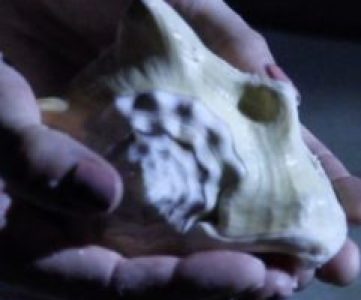Reimagining Human-AI Co-Creation Through Tactile Exploration
TT Journal, ISSUE 6, September 2023
By Lenka Hámošová
Introduction
There’s a growing sense of disillusionment with the direction AI research is taking among artists and researchers in the creative AI field in 2023. Artistic interventions into the generative processes are becoming harder as the creative AI tools are turning into narrowly defined subscription services or invisible features of graphic softwares. Professionals are expected to use AI in their workflow to make their work more efficient and productive, while the general public enjoys the entertainment of superficial generation of profile pictures and memes.
What used to be a wild frontier of creativity in 2018 turned into a profitable market of creative AI business. We have exchanged the experimentation with open-source AI models in favour of neat user experience of various generative AI apps. The improvements in quality and stability seem to be in direct relation to the diminishment of creative options that these tools offer. It seems that the vast world of artistic expression is now being funnelled down to mere prompt-based interactions, which have become the primary way the public interacts with AI. More and more, artists find themselves curating inputs and outputs, rather than truly crafting the art in a synthetic process.
Have we lost our innovative spark, or have we just become content with how AI tools are currently integrated into our creative processes? Should we really be settling for just using text prompts when collaborating with AI? And do we just want to just be passive subscribers, feeding big AI companies with our data and creativity?
The Creative AI needs to be redefined and re-established in more emancipatory terms for artists to intervene with bigger agency into the AI-driven media synthesis. The term human-AI co-creation opened the discussion towards the collaborative aspect of art making with AI models, but the common understanding of such collaboration stays very shallow. It has become a buzzword that glorifies human-computer interaction instead of the real potential of collectivity between humans and AI.
Production of generated synthetic media does not rely on a sole author, nor on the new technology, but is an outcome of a cooperative action of two (or more) entities. Different agencies merge together in the process of such collaborative creation. The human usually approaches an AI model with some level of curiosity and intention to manifest a vision, whereas the AI model reacts to the given input. It tries to please, but in fact is only guessing what could possibly satisfy the trigger. This usually leads to an endless loop of iterations. Every generated outcome triggers a different prompt, which again triggers the model to guess another answer, and so on. In this kind of relation both the human and the AI system are unfortunately stuck, not being able to fully embrace the co-creative relationship. What if this loop was broken and each of the participating sides would explore what’s outside of this scripted reality? What creative possibilities have remained unexplored? How can we approach the whole human-AI co-creation differently?
Exploratory artistic interventions are able to question new technology, test its boundaries and help raising important questions relevant for the general AI research. Hence the idea of devising a collaborative workshop to explore unexplored ways of engaging with generative AI tools and focus more on fostering caring relationship between human and AI.
Workshop on co-creation with AI algorithms
This article presents collective thoughts from a collaborative research project and workshop exploring participatory perspectives of AI-media synthesis in artistic practice. The workshop invited 12 interdisciplinary artists and researchers with interest in exploring co-creation with AI to join 2-days of creative experiments. The goal was to explore the offerings and boundaries of the collectivity, creating a polyvocal symphony of perspectives questioning the co-creative process with AI.
To challenge the connection between technology and the conceptual thinking, we started the workshop with a collective physical experience that could bring the often overlooked embodied reality to the conscious level of discussions about human-AI co-creation. Especially during the creative confrontation with artificial intelligence, that has been made in the image of our mind, it’s easy to fall into the trap of mind-body dualism. However, excluding the body from the creative process would mean giving up on what makes us actually different from AI – the emotions.
In discussion with Tereza Stehlíková, we chose to work with the research methodology for exploring the sense of touch in the format of her Tactile Conversations as the initial collective experience. The exercise was inspired by Jan Švankmajer’s gestic sculptures and his idea that material imprints feelings. Through the material of clay, blinded workshop participants engaged in embodied communication among each other by expressing their emotions into the clay. This exchange represented the messy process of collective negotiation. Questions related to boundaries between the individual and negotiated space and mutual respect and empathy quickly emerged. This experience stimulated further discussion about the commonalities with human-AI co-creation and opened doors for different understanding of co-creation as a layered and embodied process.
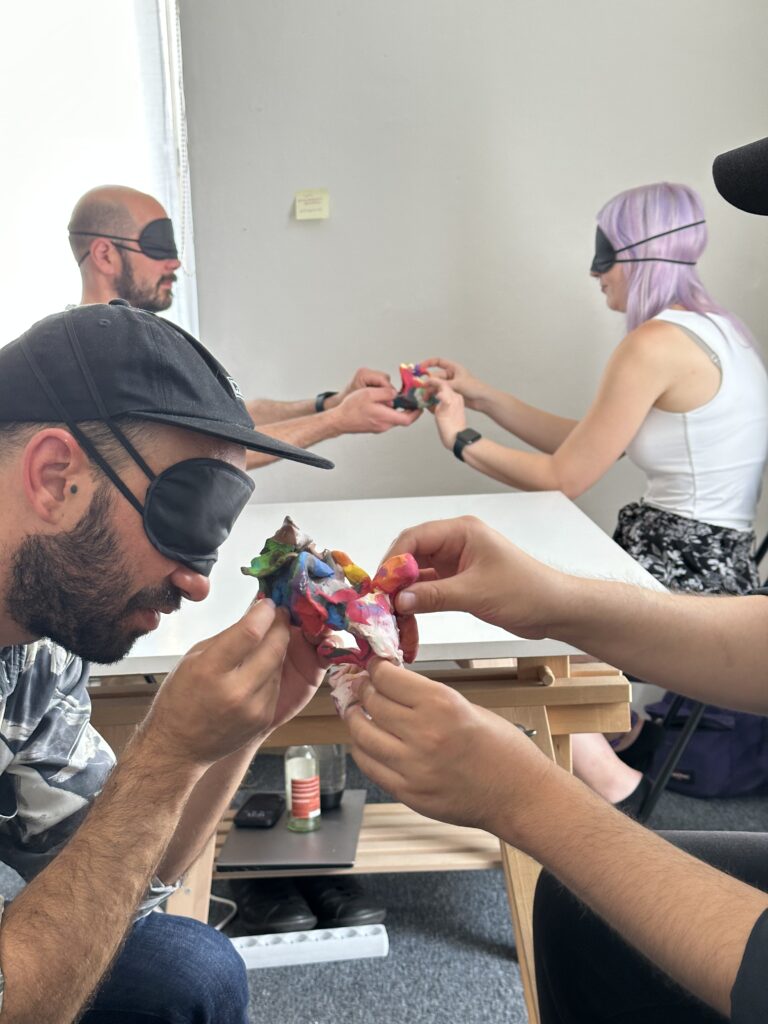
One of the most intriguing things the participants experienced during the tactile exercise was the sense of vulnerability and openness that emerged from the physical interaction with the material of modelling clay. They found themselves in a state of intense focus and presence, devoid of distractions, as they communicated through touch. This departure from their usual digital work brought a profound shift in their mindset, leading to a more authentic and intuitive creative process. Additionally, they reflected on the challenge of letting go of individual ownership and embracing collaborative creation, a concept they felt was deeply meaningful and applicable to their personal art practices. The tactile exercise allowed them to explore uncharted territories, leading to a greater appreciation for the potential of embodied communication and its significance in their creative work.
The physical artefacts – the blobs of co-shaped clay – happened to be the inputs for further iterative experiments including AI into the creative dialogue. How to explain to an AI model what such a shapeless messy blob is and what it means to us? It can not be interpreted just because of its resemblance to a known categories of objects as a recognition model would do. It is also hard if not impossible to explain to an AI model the depth of felt states that we were experiencing through our bodies, nor the embodied intelligence that was driving our hands while we were communicating through touch. Realising this gap in our realities, we started wondering whether it is even possible to talk about co-creation with AI, if we are not able to explain our inner emotional world that is so much connected to our actions. Is it fair to invite AI into the co-creation while not levelling up with it? Isn’t it just an extractivist thinking – to expose an AI system to such non-transparent communication and profit from the spectacle of its desperate guessing for the right answer? What are such human-AI confrontations telling us?
There is a number of artistic projects that are based on mocking the AI for being too stupid, or unable to understand the inputs from humans. Other more critical projects intentionally trigger miscommunication between humans and AI in order to point to unresolved ethical issues around future applications of AI. However critical and interventionist these projects are, we cannot talk about human-AI co-creation in such a case. They don’t seek to build a caring relationship between us and (some form of) AI, they are simply exposing the malfunctioning parts without offering alternative solutions.
On the other hand, an honest attempt of mutual understanding and empathy towards the different realities humans and artificial intelligence occupy could lead to discovering areas of hope for a more meaningful future human-AI co-existence. Adopting balanced co-creation in exploratory artistic endeavours is a good start.
The flow of thoughts
This following text is intentionally written in an experimental format – trying to recreate the flow of thoughts that appeared in the group throughout the experiment and further during the workshop. The origin of the thoughts is collective: some are mine, some are transcribed from recorded group discussions and some belong to the artificial intelligence (generated via ChatGPT in response to the human thoughts).
“This is gonna be awkward.”
It resembles an art therapy session, or those support groups meetings where people sit in a circle and share their shameful stories to learn about the sense of community. Why do shared artistic experiences have to be associated with such a context? Might be the human tendency to compartmentalise activities and then experiencing discomfort when boundaries blur. But to fully comprehend the human-AI co-creation, even more blurring of boundaries will take place.
Individualistic society
The society we live in shaped us as individualistic beings. We don’t know how to approach one another without social conventions and we are afraid to be open and vulnerable about it, because it might hurt our social position. On top of that, the idea of a single genius mind and one-person authorship is still the main narrative in artistic education.
Ironic distance as a self-defence
Let’s not get too serious about the process, it’s anyway just a hobby stuff. After the workshop is done, we will come back to the legitimate work, where we use logical thinking and rational mind. This is just a short excursion to a fairy tale land. It might be good to relax and perhaps inspire, but can’t be taken seriously, right? It can not have the same importance as the work we do with computers when programming and so on.
How far can we get if we continue prioritising only the logical “productive” work?
Shame for intuition
I don’t feel good about it at all. How come I allowed myself to embark on this intuitive journey and bypass the mind that keeps me alive with its rational voice? How do I validate this experience?
Acceptance of the embodied reality
Ok, the body is indeed important. We need it to perceive the world and learn about the world through our bodies that have senses and create emotions that are driving our actions. Recognising the importance of the body underscores the value of multisensory experiences, which is often overlooked in a digitised world.
Algorithmic paradox
Although it was intuitive and embodied experience, the process was actually quite algorithmic, wasn’t it? We followed specific steps to achieve anticipated outcomes. It’s fascinating how human processes, even artistic ones, can be seen as algorithmic. Maybe we are not so different from the AI after all?
Liberation in blindness
Not being able to see was so liberating, we didn’t have to consider any aesthetics and were free to just let our bodies to respond. We live in such a visual culture driven world with high demands on everything to look pleasing that it is consciously or subconsciously taking over our creative freedom.
Lack of control
How come I am not controlling this situation? Why am I doing something I don’t know why? I’m willingly losing the control in the world that emphasises personal agency.
Dialogue in shape – adding the value
It was not about the shape at all, it’s the adding of the value by the partner that was intriguing in the process of exchange between us.
Child-like simplicity
There was a sudden sense of purpose from realising I feel satisfied from perfecting this imperfect shape to a ball. There doesn’t have to be a reason for it. When we were kids it was ok to do this kind of playful stuff. Now we feel we need to rationalise everything first. But maybe we don’t.
Surprising aesthetics
Seems like everyone expected the outcomes to look all messy, just because we were blinded, not knowing what we’re doing, allowing the loss of control and the messiness of the conversation between us. But the shapes are actually very pretty.
Letting go
When you work on something for a while, you start to feel something precious to it, you don’t want to let it go and let someone else intervene in it. But when you feel that theirs intervention will be gentle and with respect, with the attempt to understand what you were creating, it’s easier to let go. Collaboration requires trust.
Feedback loop struggles
We engage in this feedback loop of conversation – it’s not always the case that we are synced and building something together, adding the value piece by piece. Sometimes it’s struggle for understanding, pushing and pulling back, heavy negotiating. And if it continues for a long time, such conversation turns into something psychotic. It quickly becomes frustrating.
Beyond verbal labelling
In verbal communication we need to find the right words to label the emotions we want to share. This is not easy and often gets lost in translation. Especially the labeling of emotions leads to conceptualisation and that’s like this extra layer on the top of the experienced state. If we can channel our emotions to other human beings by avoiding the language, why do we think that using natural language as an interface to AI is a good idea? Direct emotional communication without the barrier of language can be more effective, especially when considering human-AI interfaces.
Innate collaboration intelligence
As if my body knew which zones of the clay blob I can modify and which I should respect, the body knew intuitively. People collaborate on a code, for example, in open source – there you have to accept the suggested changes to the code as the initiator. It needs to be approved by the brain. Here, it all happened without thinking, somehow naturally, without the need for a protocol of how to avoid conflict. The body’s intuitive knowledge is a testament to our inherently collaborative nature.
Interdisciplinary chaos
Successful collaboration requires active listening, but people often just don’t listen to each other. Here it was clear that we needed to leave some space for each other to be able to communicate.
Merging perspectives is messy
There was a real mess when we attempted to connect our pieces together. There were many hands and fingers all over the clay shape and nobody knew where to touch to make pieces stay together. Some of us even rather deliberately stayed out of this process. At some point one person had to take over and actually connect the parts. There’s a huge need for leadership or direction in collaborative endeavors.
Cultural difference
Would this experience be different in different cultures? For example in cultures that are less individualistic? Cultures with varying values towards individualism and collectivism would likely approach such a workshop differently. Considering the cultural context is crucial when analysing group dynamics.
Melting matter with boundaries you try to process turning concreteness into abstraction, shaping shape into a form that escapes hands as fingers from other space that bring a new form diluted object with unprecedented form of square turns into canvas with holes without meanings and you still try to catch the feeling right into a cohesive, communal shape.
I’m kind of lost.
The aftermath
This tactile exercise and its ensuing reflections profoundly influenced the subsequent experiments during the workshop. Engaging with the clay provided a distinct experience compared to the usual ideation and brainstorming sessions typically initiating projects. Even participants who felt somewhat detached from this method found themselves continually pondering it throughout the remainder of the workshop. Departing from this exercise felt seamless, especially given the presence of two tangible artefacts on the table. These items encapsulated the entirety of the experience, capturing sentiments and interactions that words couldn’t convey.
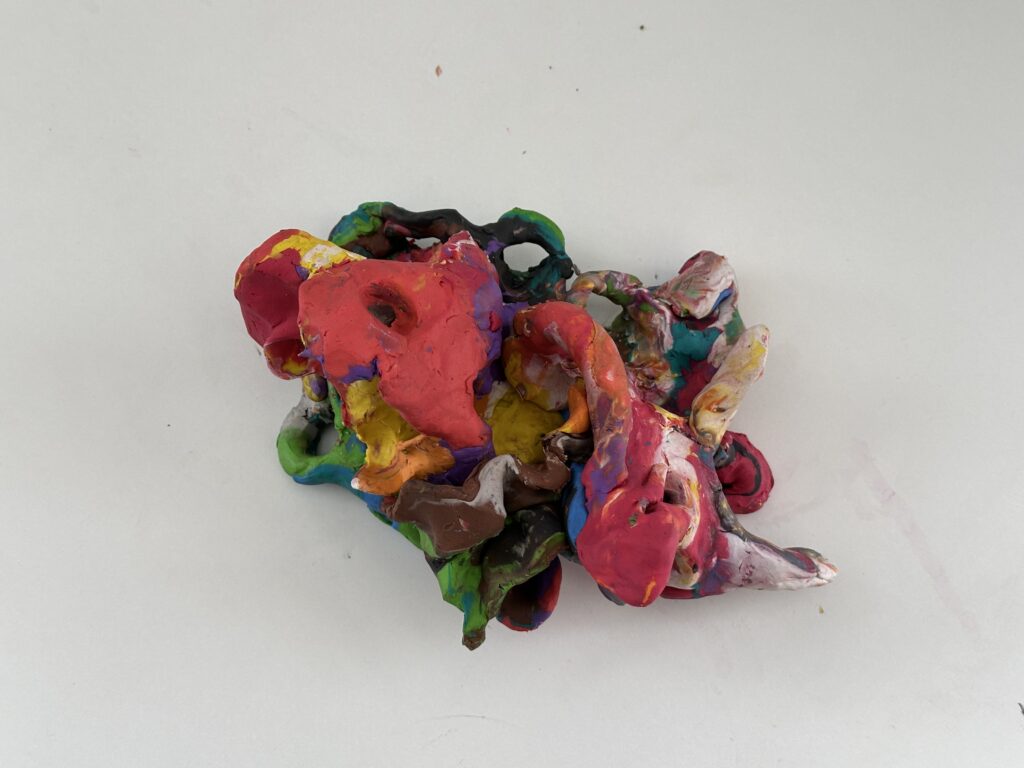
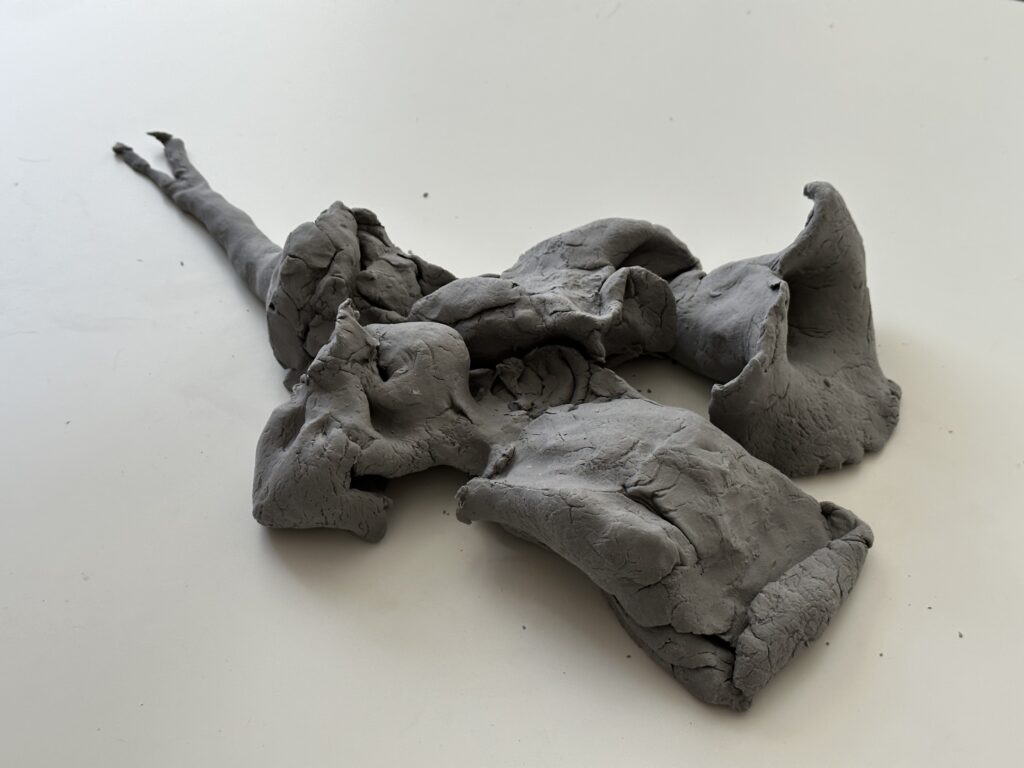
Participants divided into three groups, each crafting distinct procedures, but all were rooted in examining the two clay blobs. The intuitive first step involved introducing the blob’s data to the AI, either by photographing it from various angles or through 3D scanning. Extensive discussions revolved around the challenge of conveying the significance of these shapes to any available AI model. Even with the AI’s occasional misinterpretations of the provided inputs, the dialogue between workshop attendees and the AI models became notably more compassionate, understanding, and introspective.
Experiments ranged from refining a Stable Diffusion model — a text-to-image generative AI — by incorporating a new, albeit meaningless, word into the model’s vocabulary. Despite its lack of meaning, this integration spurred the generation of fresh visual concepts tied to this novel word. Another group dabbled with image-to-text descriptions of specific sections of the clay blob, focusing on the associations made by the AI. Meanwhile, a third group traced the blob’s organic outline, using that trajectory to navigate the latent space of a GAN model. This exploration was then transformed into sound, providing a unique auditory perspective of the model’s inner workings. Across the board, participants came away with insightful observations, gaining a deeper understanding than mere cognitive contemplation might afford and nurturing ideas that were still evolving.
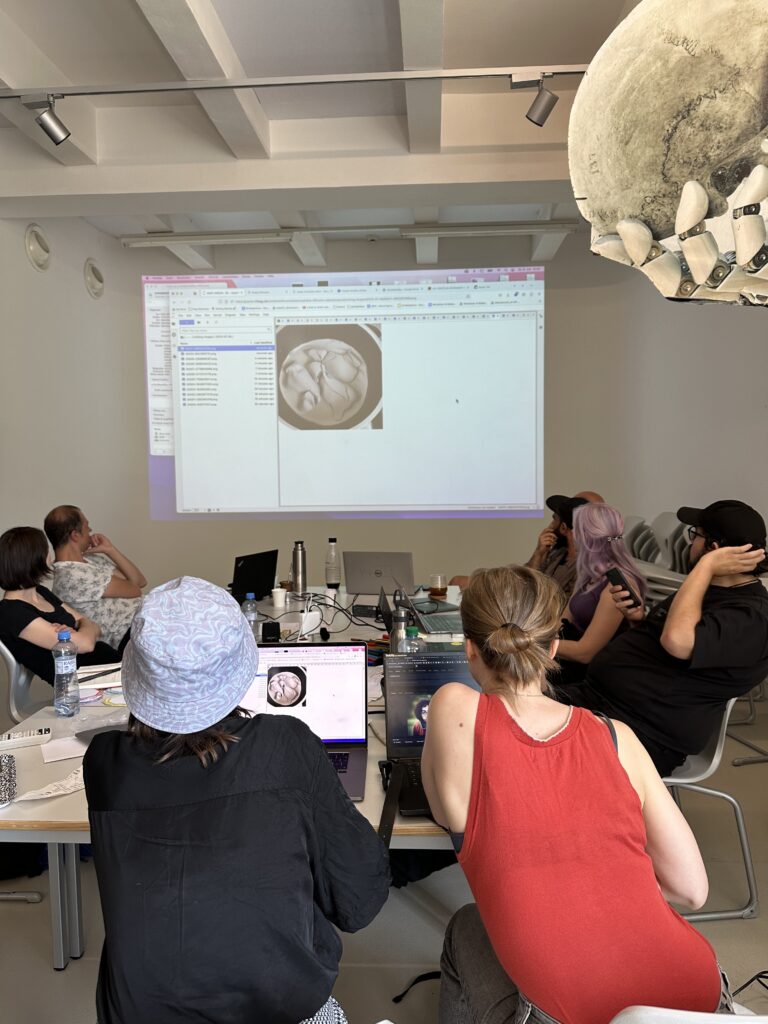
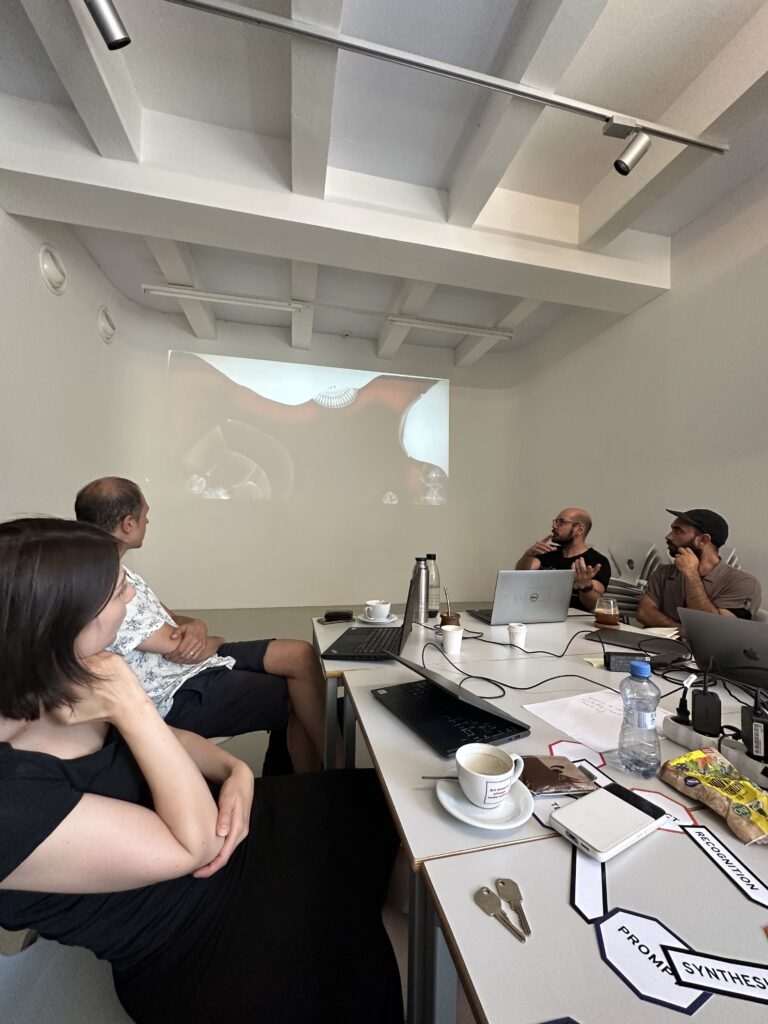
Conclusion
The journey of collaborative and co-creative relationships between humans and AI is a complex tapestry of embodied experiences, intellectual contemplations, and technological evolutions. Through the workshop described, artists and researchers journeyed into uncharted territories that brought into light the delicate balance of mutual respect, understanding, and the vulnerability of co-creation. The tactile exercise serves as a poignant metaphor for the many facets of human-AI interactions – from the complexities of embodied communication to the challenges of bridging two very distinct realms of understanding.
The societal conditioning of individualism and the illusion of the “lone genius” artist, as reflected by the participants, runs counter to the very essence of collaborative creation. This mirrors the challenges of accepting AI not just as a tool, but as a creative partner with its own realm of understanding. The tactile engagement with clay broke down preconceived notions of aesthetic perfection and opened up a space for raw, intuitive co-creation.
While the blobs of clay may confound AI in their abstractness, they also serve as a reminder that true co-creation transcends the mere transactional or superficial. If we are to invite AI into the realms of our deepest emotions and embodied experiences, there is a profound need for a deeper mutual understanding. It’s not about mocking the inadequacies of AI, but rather, to engage with it empathetically, striving for a true melding of creative minds and mechanisms.
Ultimately, if human-AI co-creation is to move beyond buzzwords and superficial engagements, there is a pressing need to redefine it in more emancipatory terms. By intertwining human intuition, emotion, and AI’s vast potential in a dance of mutual respect and understanding, we can hope to pierce through the current status quo, illuminating new creative horizons that have the power to redefine our collective artistic journey.
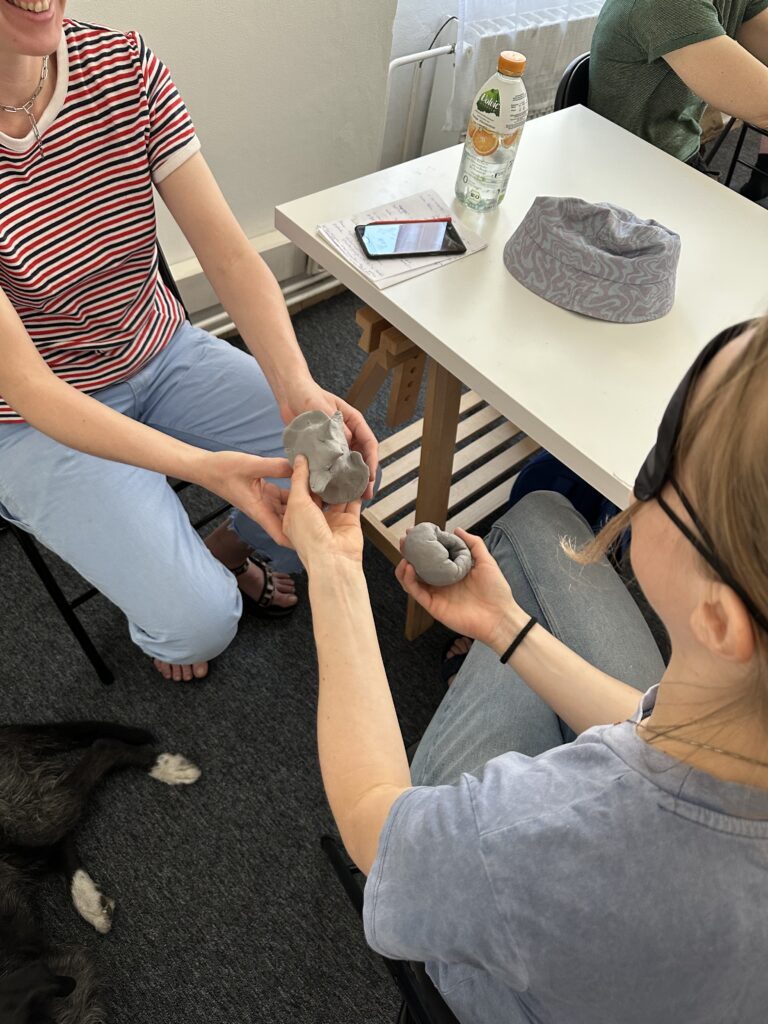
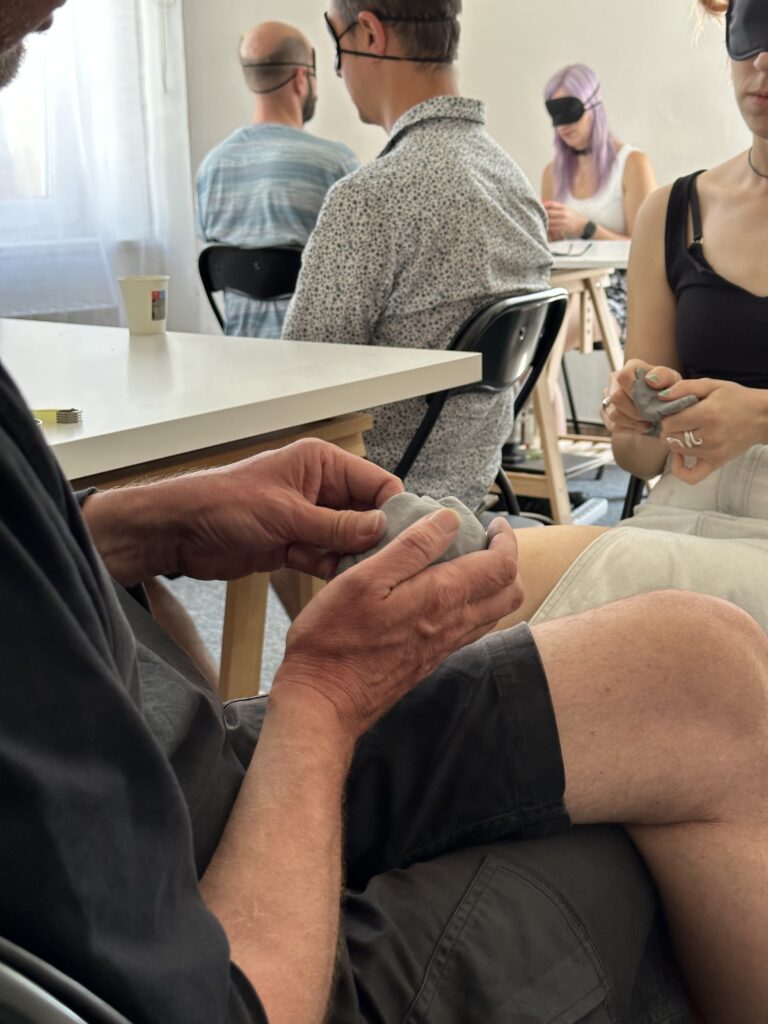
This article and the workshop originated at Academy of Performing Arts in Prague as part of the project “Generative Neural Networks and Human Imagination: Participatory Approaches to Synthetic Media Production” with the support of the Institutional Endowment for the Longterm Conceptual Development of the Research Institutes, as provided by the Ministry of Education, Youth and Sports of the Czech Republic in the year 2023.
Lenka Hámošová is a visual artist and researcher focusing on synthetic media and the use of artificial intelligence in artistic practice. As part of her PhD at the Academy of Performing Arts (FAMU) in Prague, she is specifically interested in the collective perspectives of human-AI co-creation and experimentation with participatory approach for AI-assisted media synthesis. She also explores ways of interdisciplinary collaboration in her educational and research activities related to the activities of the Uroboros collective (Uroboros Festival), of which she is a co-founder. She graduated from the Master’s programme in Design at the Sandberg Institute in Amsterdam and Visual Communication at the Academy of Fine Arts in Bratislava. She has initiated creative AI meet-ups in Prague, designed an educational set of brainstorming AI/ML cards Collective Vision of Synthetic Reality and is starting teaching her own course on AI in artistic practice at Centre for Audiovisual Arts at FAMU Prague. In the past she has taught at various visual arts programmes such as MA Future Design at Prague City University and Digital Arts at Academy of Fine Arts and Design in Bratislava.
https://hamosova.com
https://www.instagram.com/lenkahamosova/
https://www.linkedin.com/in/lenkahamosova/
https://medium.com/@lenkahamosova
